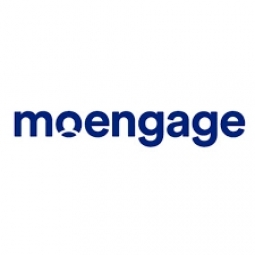Technology Category
- Robots - Wheeled Robots
- Sensors - GPS
Applicable Industries
- Cities & Municipalities
- Telecommunications
Applicable Functions
- Sales & Marketing
Use Cases
- Leakage & Flood Monitoring
- Smart City Operations
About The Customer
1Weather is a top-rated weather app on the Google Play Store, providing real-time local weather predictions. The mobile app offers weather information and forecasts for locations worldwide, as well as severe weather alerts and reports for specific locations in the U.S. 1Weather has more than 8 million active users, of which 5% are from the U.S. These users rely on the app for daily weather predictions, even when they are on the move.
The Challenge
1Weather, a top-rated weather app, faced a challenge in maintaining user engagement and re-engagement. Despite providing regular weather updates and predictions, the app was experiencing lower page sessions. The company wanted to ensure that users could consistently benefit from its accurate weather information and forecasts. The primary goals were to increase app opens and engagement, improve click-through rates (CTRs) using relevant push notifications, and boost the depth of each session using a content engagement score (CES). However, the company faced limitations due to the majority of its user base being in the U.S., where stringent data and user privacy laws required all engagement communications to be related to weather conditions only.
The Solution
To overcome these challenges, 1Weather adopted a more segmented engagement approach, ensuring that delivered messages were relevant to each user and optimizing the number of messages sent. The company partnered with MoEngage to deploy its customer engagement platform. They leveraged the massive amount of location data from nearly 8 million users, which was analyzed using MoEngage Analytics to create niche user segments. The brand’s marketing team was also able to analyze past users’ behavior and their mobile app activity. They then segmented users into active and inactive groups, further segmented based on their default location preferences. The team utilized these newly segmented groups to dynamically map personalized user communication campaigns using Periodically Scheduled Push Notifications and Dynamic Product Messaging (DPM). They also implemented strategies to improve mobile app stickiness, moving users from the inactive segment group to the active segment group, and adding more location data to a user’s current profile.
Operational Impact
Quantitative Benefit

Case Study missing?
Start adding your own!
Register with your work email and create a new case study profile for your business.
Related Case Studies.

Case Study
Turning A Stadium Into A Smart Building
Honeywell created what it called the “intelligent system” for the National Stadium in Beijing, China, turning the venue for the opening and closing events at the 2008 Summer Olympics into a “smart building.” Designed by highly controversial artist Ai Weiwei, the “Bird’s Nest” remains one of the most impressive feats of stadium architecture in the world. The 250,000 square meter structure housed more than 100,000 athletes and spectators at a time. To accommodate such capacity, China turned to Honeywell’s EBI Integrated Building Management System to create an integrated “intelligent system” for improved building security, safety and energy efficiency.
.png)
Case Study
Smart Street Light Network (Copenhagen)
Key stakeholders are taking a comprehensive approach to rethinking smart city innovation. City leaders have collaborated through partnerships involving government, research institutions and solution providers. The Copenhagen Solutions Lab is one of the leading organizations at the forefront of this movement. By bringing together manufacturers with municipal buyers, the Copenhagen Solutions Lab has catalyzed the development and deployment of next-generation smart city innovations. Copenhagen is leveraging this unique approach to accelerate the implementation of smart city solutions. One of the primary focus areas is LED street lighting.

Case Study
Buoy Status Monitoring with LoRa
The Netherlands are well-known for their inland waterways, canals, sluices and of course port activities. The Dutch Ministry of Infrastructure indicates that there are thousands of buoys and fixed items in and near water environments that would profit from IoT monitoring. One of the problems with buoys for example, is that they get hit by ships and the anchor cable breaks. Without connectivity, it takes quite some time to find out that something has happened with that buoy. Not to mention the costs of renting a boat to go to the buoy to fix it. Another important issue, is that there is no real-time monitoring of the buoys at this moment. Only by physically visiting the object on the water, one gains insight in its status.

Case Study
Barcelona Case Study
Barcelona’s heavy traffic and its associated high levels of pollution were the primary factors that motivated some companies and universities to work on strategies for improving traffic in the city centre. Bitcarrier is one of the technologies involved in the In4Mo Project, whose main objective is to develop the applications that form the core of smart mobility, one of the fundamental pillars of the smart city concept.

Case Study
China Mobile Smart Parking
Smart Parking, powered by NB-IoT technology, is making it easier for drivers to find free parking spots. Cities can better manage their parking assets and maximize the revenue available to them as a result. Drivers searching for parking create congestion and pollution by circling and hunting for available parking. Smart Parking services are able to significantly ease these problems by guiding a driver directly to a parking space.








